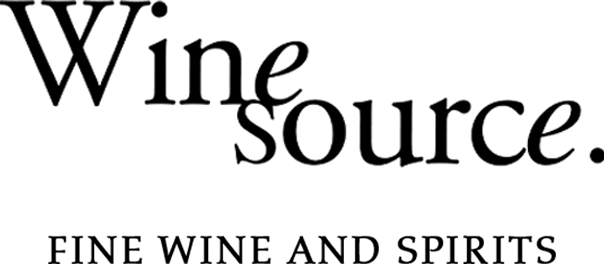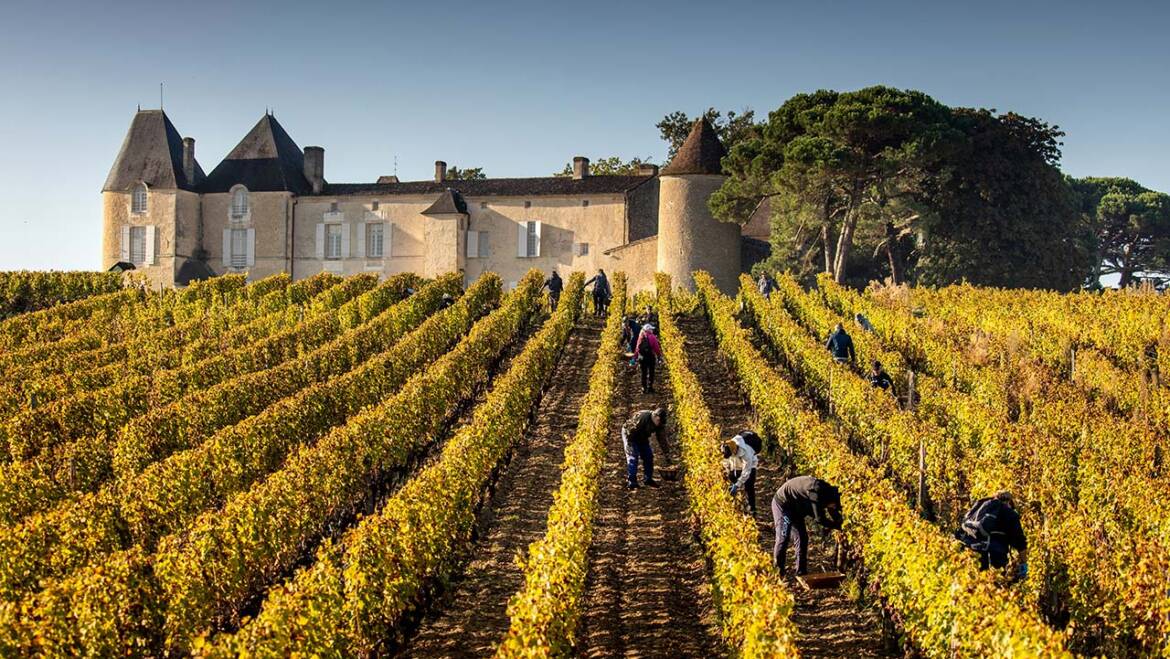Yquem Raised to the ranks of Premier Cru Supérieur appellation in 1855, Château d’Yquem is the product of meticulous work in the vineyard. Since its beginnings, it has benefited from an exceptional terroir, as well as being the result of a unique ancestral know-how since 1593. Château d’Yquem was attributed the esteemed title Premier Cru Supérieur in 1855. From that point, the genius of this sweet wine was acknowledged, and the Sauvage and Lur Saluces families went on preserving their treasure for over 400 years. The LVMH group acquired the estate in 1999, with the continued desire to go on writing the legendary Yquem story, both in keeping with tradition and remaining open to modern advances.
Château d’Yquem is renowned for its absolute mastery of selective harvesting in waves. This technique is dictated by the gradual development of Botrytis cinerea, which can transform the grapes into “drops of gold” given the right climate conditions. With the effects of noble rot, the sugar and juice of the grapes become highly concentrated, well beyond ordinary ripeness, until they reach the “signature” level at Yquem, which is 20% of potential alcohol for the must, with 360 grams of sugar per liter. Pickers must ensure that the fruit is at the correct stage of Botrytis development, and on average they carry out 5 or 6 selections over six weeks. This risky process involves a long wait, with late and extended harvests as well as a high risk of losing the crop as winter approaches, and a reduction of around 50% of the total juice volume. As a result, yields are very low at Yquem, on average 9 hectoliters per hectare, and is one of the reasons for its consistently outstanding quality. This philosophy of extremely careful selection continues in the cellar supervised by Sandrine Gabray, where the wine is aged for three years in new oak barrels. Yields amount to just one glass of wine per vine.
Château d’Yquem stays on the palate for a remarkable long time, providing a unique, prolonged pleasure. Certain connoisseurs consider it outrageous to drink a young Yquem and believe that opening such a monumental wine before its thirtieth birthday is tantamount to a sacrilege. Others, on the contrary, think that Yquem can be enjoyed at all stages in its life.
With an annual production of 10,000 bottles a year, Y (pronounced “ee-grek” in French) is a rare wine. It is made from the same outstanding terroir and the same vines as Château d’Yquem. Although work in the vineyard is every bit as meticulous, the grapes are picked and the wine made in a different way.
Y was formerly made at the end of the harvest, with the last bunches left on the vines. These grapes, affected to varying degrees by Botrytis cinerea, but never with more than 15% potential alcohol, resulted in a very unusual wine. This explains why it has always been produced in small quantities and on an irregular basis since 1959. Y changed starting in 1996, but without compromising its unique character, to be more in tune with the times by displaying the qualities of freshness and crispness – essential for a modern great white wine. It was decided in 2004 to make Y every year. It is thus by deliberate choice that we now harvest certain plots of Sauvignon Blanc at the beginning of the vintage, making sure to pick perfectly ripe bunches. These are completed by Sémillon grapes picked just at that fleeting stage when the grapes have reached maximum ripeness, botrytis has just appeared, and the skins have turned a pinkish colour. This is the precise moment when this grape variety’s tannins are soft enough for the aromatic potential of the best plots of clay soil to come through.
The wine receives close attention all during fermentation: light, precise pressing as well as temperature-controlled must racking and alcoholic fermentation in a new aesthetically pleasing, state-of-the-art vat room set aside just for this wine. The end of fermentation and ageing on the lees take place in barrels. Only one third of these are new, and the lees are regularly stirred (bâtonnage) for ten months.
The final blend is made after tasting. It usually consists predominantly of Sauvignon Blanc and a few lots of Sémillon.
Follow this producer
Official website:
 http://yquem.fr/int-en/
http://yquem.fr/int-en/
Official Instagram:
 @yquem
@yquem



